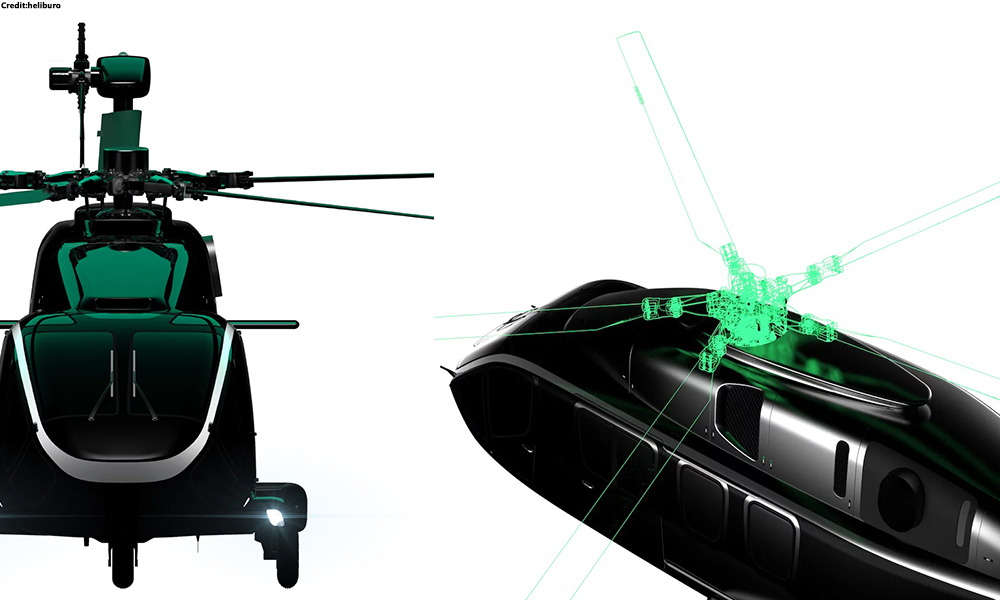Defence
India’s AMCA parts to be printed on 3D machines

In a bold step towards innovation, India’s Advanced Medium Combat Aircraft (AMCA) program is set to revolutionize its production process with 3D printing technology.
This ambitious move by Hindustan Aeronautics Limited (HAL), the manufacturer behind the AMCA, aims to harness the transformative potential of additive manufacturing. By integrating 3D printing, HAL anticipates substantial benefits ranging from cost reduction and faster turnaround times to optimized material usage.
India is advancing with its own development of its first fifth-generation fighter jet. This endeavor poses significant challenges as it strives to incorporate the latest advancements in stealth design, speed, agility, weaponry, and avionics. The country is gearing up to manufacture these cutting-edge technologies domestically. However, achieving this goal necessitates high-tech infrastructure to meet the stringent design requirements of the aircraft.
Traditionally, aircraft manufacturing has relied on labor-intensive processes such as CNC machining, which often lead to significant material wastage and extended production timelines. For the AMCA, a sophisticated fifth-generation fighter jet emphasizing stealth technology, achieving high-quality finishes while minimizing costs is paramount. Here, 3D printing emerges as a game-changer.
The adoption of 3D printing not only promises to streamline production but also offers opportunities to mitigate material waste, a critical challenge in aerospace manufacturing. HAL’s strategic partnerships with private sector firms specializing in 3D printing underscore its commitment to leveraging external expertise for optimal implementation.
However, the transition to additive manufacturing necessitates careful consideration of various factors. Ensuring stringent quality control, identifying suitable materials that meet stealth requirements, and establishing robust post-processing capabilities are essential steps in this transformative journey. HAL’s meticulous approach to these challenges underscores its dedication to maintaining the AMCA’s standards of excellence. If successfully implemented, this initiative could set a precedent for future endeavors, positioning Indian aircraft manufacturing on a trajectory towards greater agility and cost-effectiveness.
Recently, Lockheed Martin, a leading global aerospace and defense company Expressed interest in partnering with India’s most anticipated project, the Advanced Medium Combat Aircraft (AMCA), likely to be a 5th generation fighter jet for the Indian military.
Their proposed collaboration could involve a spectrum of advanced technologies, including the Auto Ground Collision Avoidance System (Auto GCAS), a life-saving technology that intervenes to prevent ground collisions, thus significantly enhancing flight safety for Indian pilots.

Defence
Russia’s NV.17 Hybrid Helicopter Aims to Balance Light and Heavy Helicopter Needs

As Western sanctions continue to impact Russia’s aviation sector, the country is making significant strides in advancing its domestic aerospace capabilities.
Despite the ongoing challenges, Russia has unveiled the Heliburo HB.17, a cutting-edge hybrid-powered medium-class helicopter that promises to reshape both commercial and military aviation.
The helicopter is currently in the technical design phase, with plans for its first flight slated for 2027. This marks a major step forward in Russia’s efforts to modernize its aviation fleet and reduce reliance on foreign technology.
This country tops visa rejections in the popular Schengen countries
The HB.17 is designed as a versatile, multi-role aircraft, capable of performing a wide range of functions. It is built to handle cargo transport, passenger carriage, reconnaissance, and close air support missions. With its robust design and flexible capabilities, the HB.17 is expected to meet the needs of both military and commercial operators, offering a solution for missions requiring a greater capacity than light helicopters but avoiding the limitations of larger aircraft.
One of the most innovative features of the HB.17 is its hybrid power plant. This combination of conventional and electric technologies enhances fuel efficiency, allowing the helicopter to stay airborne for up to seven hours without needing to refuel.
This extended operational endurance makes the HB.17 particularly well-suited for long-duration missions, providing a significant advantage over traditional helicopters. Additionally, the HB.17 will be equipped with modern avionics, ensuring advanced navigation, communication, and operational capabilities.
Qatar Airways Cargo and MASkargo Launch New Strategic Partnership
The HB.17 is positioned to compete with other medium-class helicopters such as the Kamov Ka-60/62 and the Mil Mi-38. However, its hybrid powerplant and modern avionics set it apart, offering a more efficient and technologically advanced alternative.
Its multi-role versatility, combined with its fuel efficiency and cutting-edge systems, gives it a competitive edge in the evolving aviation landscape. The introduction of the HB.17 follows recent reports of Russia receiving a new batch of armored vehicles from the UAE-based Streit Group.
Russia has traditionally focused on producing helicopters for defense purposes, but this time, it appears to be venturing into the civilian helicopter market with the HB.17.
This, along with the ongoing development of the HB.17, reflects Russia’s continued efforts to modernize its military assets and increase its self-reliance, even as sanctions continue to pressure its defense and aerospace sectors.
As Russia faces mounting geopolitical challenges, the HB.17 stands as a symbol of resilience, technological innovation, and determination to maintain its military and aviation capabilities.
-

 Aviation2 months ago
Aviation2 months agoMicrosoft Flight Simulator Raises $3 Million to Bring Back the An-225 Mriya
-

 Airlines2 months ago
Airlines2 months agoQatar Citizens Can Travel to the United States Without a Visa
-

 Aviation2 months ago
Aviation2 months agoQatar Airways bans these new Electronic Devices on plane
-

 Airlines2 months ago
Airlines2 months agoJapan Airlines Rolls Out Free Domestic Flights to International Passengers
-

 Defence2 months ago
Defence2 months agoWhich Country Has the Largest Fleet of Fighter Aircraft?
-

 Airport2 months ago
Airport2 months agoWestern Sydney Airport Welcomes Its First Plane After 6 Years of construction
-

 Airlines4 days ago
Airlines4 days agoDAMAC Air: Dubai’s New Luxury Airline Offers Free Flights for Registration
-

 Aviation2 months ago
Aviation2 months agoDid you know ? Once Boeing 747 carried 1088 passenger in 1991








